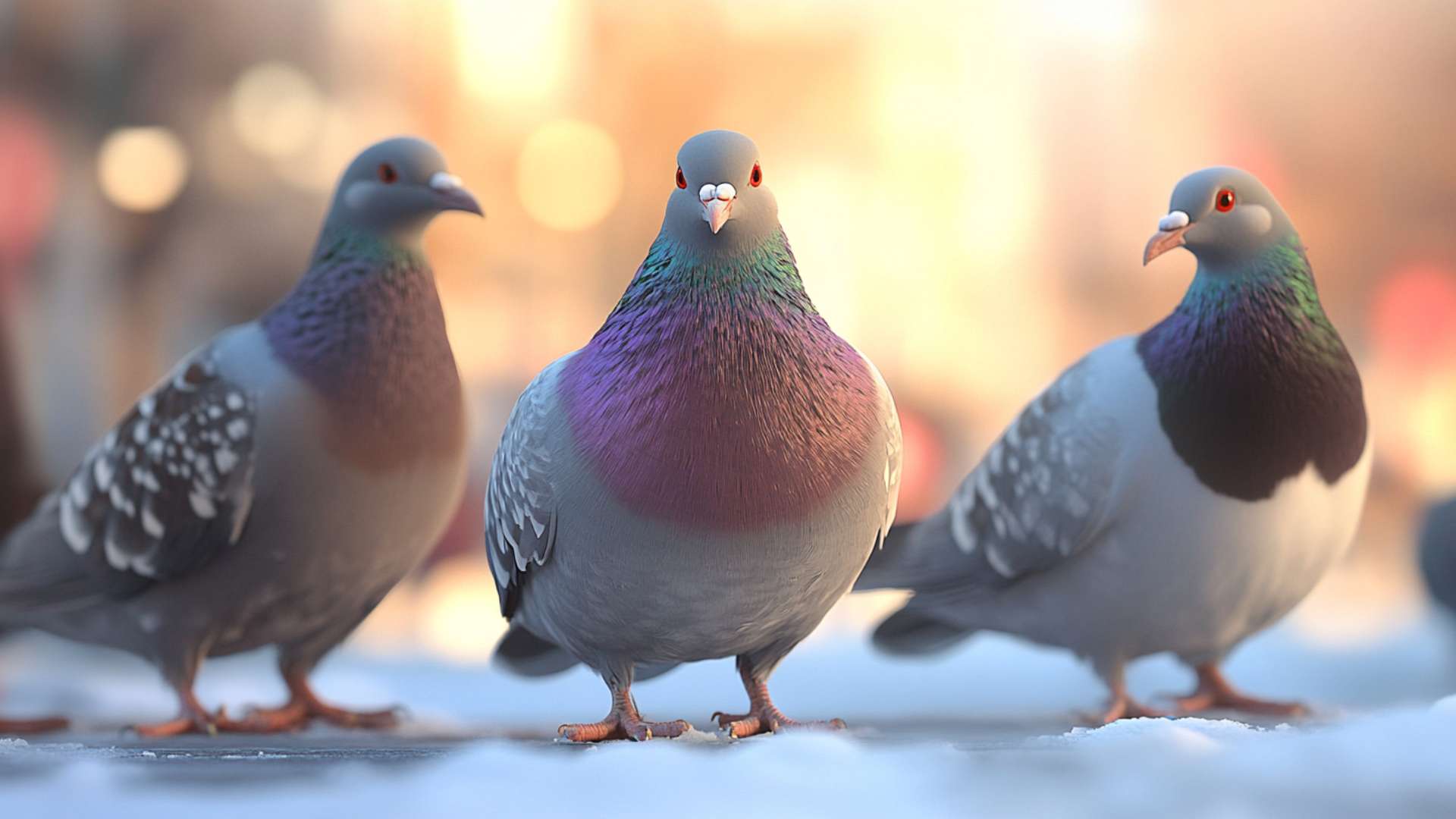Pigeons hold a fascinating place in human history and culture, with their presence dating back thousands of years. In many ancient cultures, these birds were considered sacred and held deep symbolic meanings.
For instance, in ancient Egypt, pigeons were associated with the goddess Hathor, representing love, femininity, and motherhood. They were often depicted as messengers between humans and the divine realm.
Throughout history, pigeons have been recognized as messengers from the spirit world. Their ability to traverse long distances made them ideal carriers of important messages during times when communication was limited.
Pigeon symbolism has also been prevalent in various religious texts and folklore around the world. They are often seen as holy spirits or divine messengers.
The curiosity surrounding pigeons approaching humans
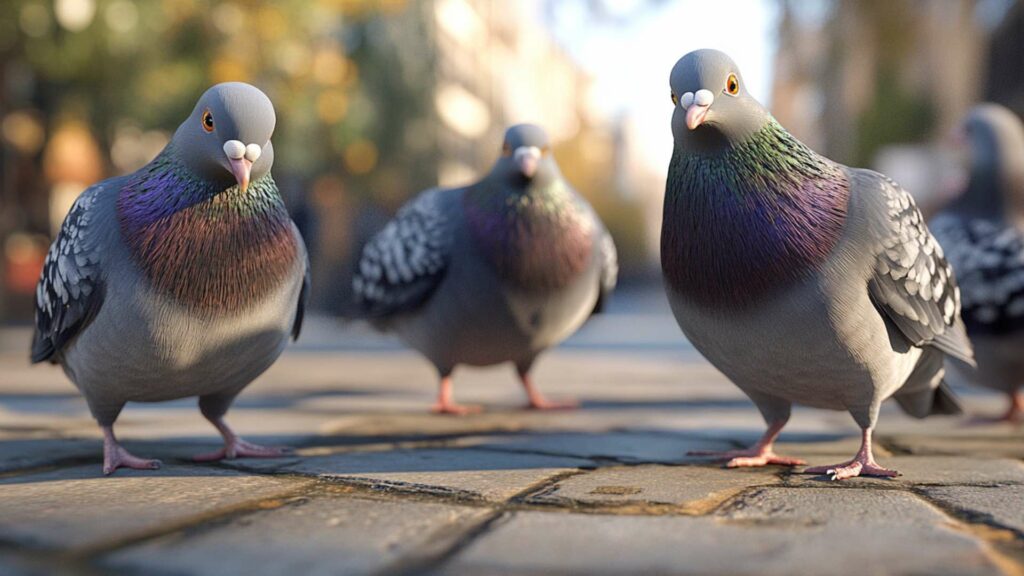
One cannot help but be intrigued when a pigeon appears and approaches them directly. Pigeons inspire curiosity due to their seemingly fearless nature when it comes to interacting with humans.
People often wonder about the deeper spiritual meanings behind such encounters. Some believe that a pigeon coming to you is a sign from the spiritual realm or your spirit animal trying to communicate with you.
It may signify a spiritual awakening or bring messages from loved ones who have passed away. In some cultures, white pigeon’ dreams are interpreted as positive omens that herald new beginnings or an abundant harvest season ahead.
The sight of these birds approaching can also evoke a sense of peace and tranquility within us. Pigeon symbolism has long been associated with embracing peace and harmony in our lives and communities.
This is why many people choose to incorporate pigeon tattoos into their body art as a reminder of these values. While scientific explanations exist for why pigeons approach humans without any apparent fear, it does not diminish the mystical allure they hold for many individuals worldwide.
The intersection between science and spirituality adds an air of intrigue to pigeon visits, leaving us contemplating the deeper significance behind these seemingly ordinary encounters with pigeons. So, let’s delve into the various interpretations and cultural beliefs surrounding this curious phenomenon.
Pigeon Behavior and Communication
The behavior and communication of pigeons are fascinating aspects of their nature. By observing their body language and vocalizations, we can gain insights into their intentions and social dynamics.
Pigeon Body Language

Pigeons communicate a great deal through their body language. When they approach you, pay attention to how they carry themselves. If a pigeon puffs up its feathers, it may be a sign of territoriality or aggression.
Conversely, if it appears relaxed with feathers smooth, it is likely feeling comfortable and at ease. Another important body language cue is head bobbing.
Pigeons engage in this behavior to establish dominance or courtship displays. If a pigeon bobs its head rapidly while looking at you, it could be trying to communicate something.
Pigeon Vocalizations
Pigeons also use vocalizations as a means of communication. Their cooing sounds are well-known and often associated with tranquility. However, pigeons have a range of vocalizations beyond cooing.
For example, when pigeons feel threatened or alarmed, they emit alarm calls that sound like short coos or grunts. These signals alert other pigeons in the vicinity to potential danger.
Understanding Pigeon Flock Dynamics
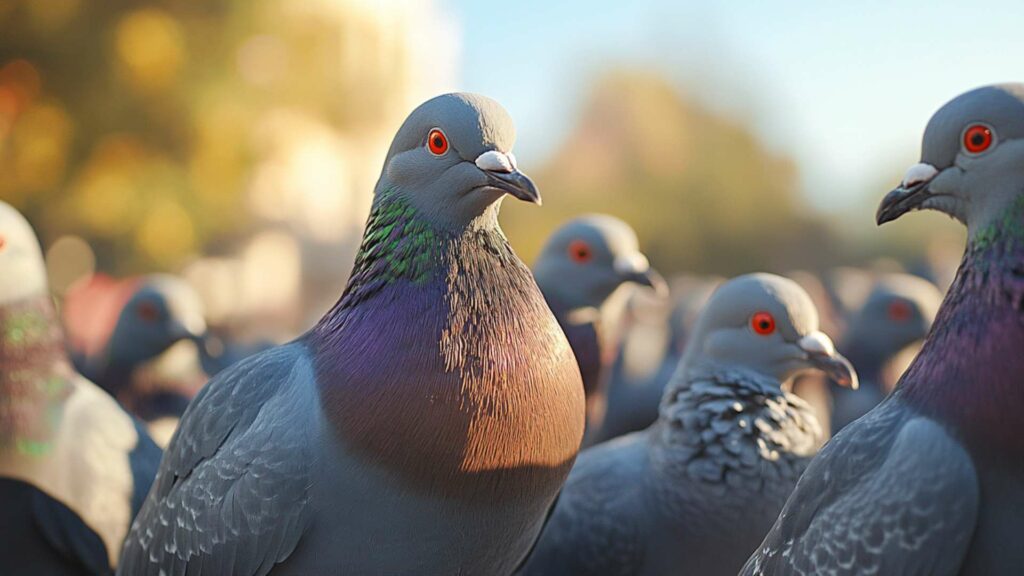
Pigeons are highly social creatures that form flocks for various reasons – safety in numbers being one of them. Understanding how these flocks operate can shed light on why pigeons might approach humans.
In a flock, there is typically a hierarchy established based on dominance. The more dominant individuals tend to occupy central positions within the group while subordinate pigeons stay towards the outskirts.
When approaching humans, some pigeons may be seeking food, as they have learned that humans can be a source of sustenance. Others may be venturing out of curiosity or following the example of more dominant pigeons within their flock.
Symbolism of a Pigeon Approaching You
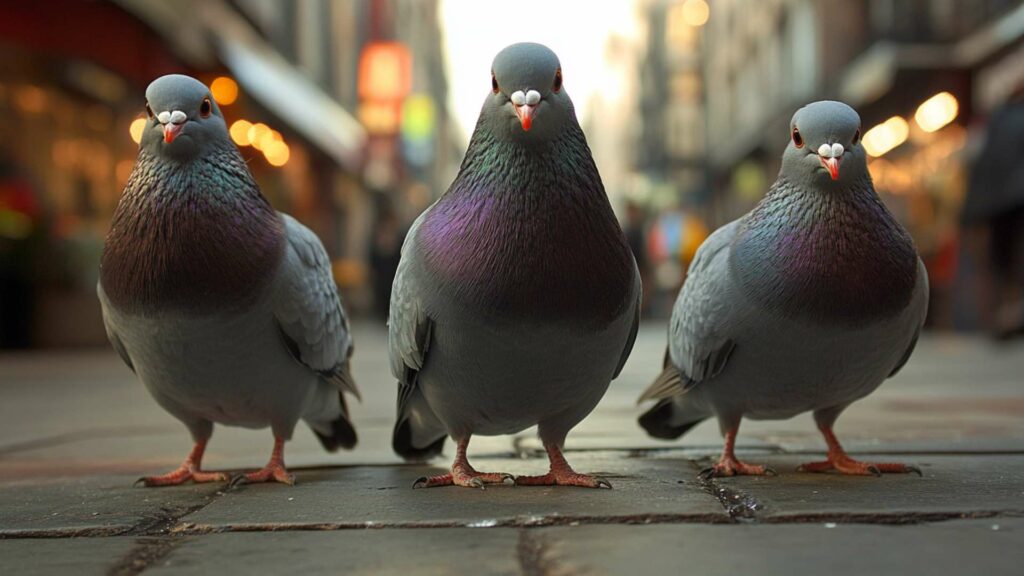
Positive Interpretations: Messages from Loved Ones or Spiritual Entities
When a pigeon comes to you unexpectedly, it may carry profound symbolic meanings or spiritual meaning. In many spiritual beliefs, pigeons are considered messengers between the mortal world and the spiritual realm.
It is believed that these graceful creatures possess an innate ability to connect with loved ones who have passed away or with spiritual entities guiding our lives. The sight of a pigeon coming to you can be seen as a profound moment of divine guidance and communication, reminding you that your departed loved ones are watching over you, offering guidance and support from beyond.
Good Luck and Fortune
The arrival of a pigeon in your vicinity can also bring forth a sense of good luck and fortune. Pigeons have long been associated with positive energies and blessings in different cultures around the world.
Their presence is often seen as a sign that an abundant harvest season lies ahead or that prosperous times are on their way. So when a pigeon flies into your sphere, it could be perceived as a fortunate omen indicating that there might be wonderful opportunities or unexpected blessings coming your way.
Peace, Harmony, and Love
Pigeons symbolize peace and harmony due to their gentle nature and tendency to coexist peacefully with humans. Witnessing the graceful flight of these birds can evoke feelings of tranquility within us.
When a pigeon comes closer to you, it is almost as if they are extending an invitation for you to embrace peace within yourself and spread harmony in your surroundings. Their presence serves as a reminder to cultivate love not only towards others but also towards oneself – nurturing inner peace leads to harmonious relationships in all aspects of life.
Negative Interpretations: Warnings or Signs of Impending Danger
While pigeons primarily embody positive symbolism, there are instances where their presence may carry negative connotations. In some cultures, seeing a black, pigeon flying alone or two pigeons flying together may be interpreted as an indication of forthcoming danger or a warning of imminent harm. It is important to note that these negative interpretations should not be taken as absolute truths but rather as cautionary signs that encourage you to exercise vigilance and awareness in your surroundings.
Misfortune or Bad Luck
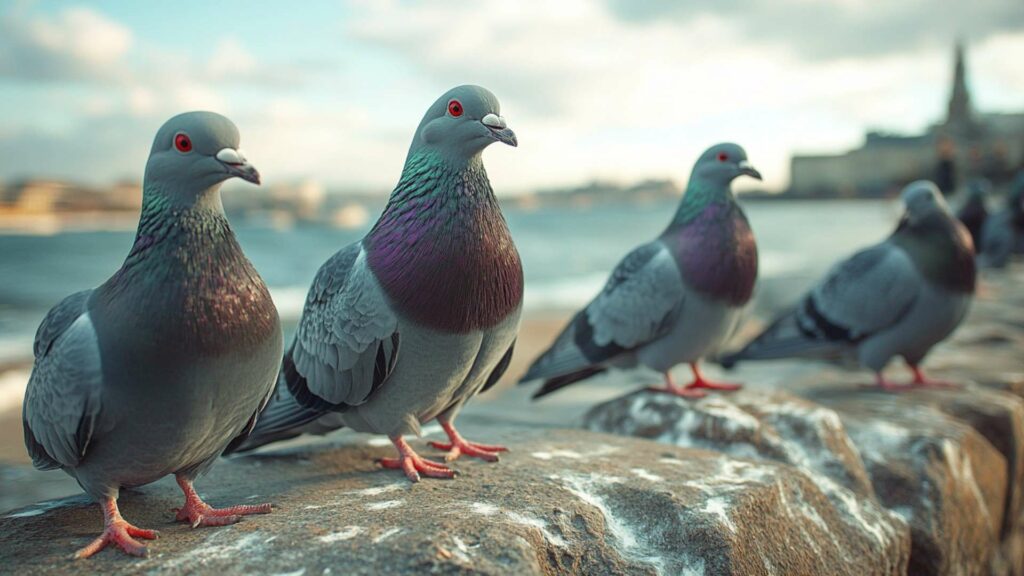
In certain belief systems, pigeons flying away from you or leaving suddenly can be seen as a hint of misfortune or impending bad luck. This symbolism suggests that something undesirable might occur soon, urging you to take precautions and remain cautious in your actions and decisions. However, it is crucial not to dwell solely on negative interpretations grey pigeon, without considering the broader context.
Pigeon symbolism encompasses various aspects, and misfortunes can often be avoided with mindfulness and proactive measures. The symbolism behind the meaning of a pigeon approaching you is rich and multifaceted.
Whether it conveys a positive energy, messages from loved ones in the spiritual world or represents good luck, peace, and love – pigeons have long been carriers of deep spiritual meanings across cultures. However, it’s essential to remember that interpretations vary based on personal beliefs and cultural contexts.
Negative interpretations like warnings or signs of misfortune should be considered cautiously rather than causing unnecessary worry. Ultimately, embracing the presence of a pigeon coming towards you can serve as a beautiful reminder to stay connected with both ourselves and the natural world around us.
Cultural Beliefs and Superstitions Related to Pigeons
Ancient Egyptian Reverence for Pigeons as Sacred Birds Associated with the Goddess Hathor
In ancient Egypt, pigeons held a significant place in their culture and mythology. These revered birds were closely associated with the goddess Hathor, who was considered the embodiment of love, beauty, and motherhood. In Egyptian belief, pigeons were seen as messengers of this divine entity.
The gray pigeon, in particular, was highly regarded for its elegant appearance and gentle nature. Pigeon symbolism played a vital role in Egyptian religious rituals.
The presence of pigeons during worship was believed to connect devotees to the spiritual realm and facilitate communication with the gods. It was customary for worshippers to release pigeons during ceremonies, symbolizing their desires being carried up to heaven by these sacred birds.
Pigeons as Messengers in Various Mythologies and Religious Texts
The significance of pigeons as messengers is not limited to ancient Egypt alone; it extends across countless mythologies and religious texts worldwide. In Hinduism, for example, pigeons are associated with Kamadeva (the god of love), symbolizing his ability to bring people together through affection and desire.
Similarly, various biblical stories mention pigeons carrying divine messages, or serving as symbols of peace and divinity. In Christianity, it is believed that the Holy Spirit descended upon Jesus Christ in the form of a dove or pigeon during his baptism.
Across many cultures throughout history, pigeons have been admired for their ability to communicate between realms – earthly and divine. They are seen as intermediaries bridging gaps between ordinary life and higher spiritual planes.
Folklore Surrounding Pigeons in Different Cultures Around the World
Pigeon folklore often reflects local beliefs about luck, fortune, spiritual guidance, and spiritual blessings. For instance, in Chinese culture, the arrival of a gray pigeon is considered a sign of good luck, symbolizing an abundant harvest season and prosperity for the community. In Japan, pigeons are associated with devotion and loyalty due to their remarkable homing abilities.
fThey are seen as guardians of relationships and are often depicted on wedding gifts to bless couples with long-lasting love and fidelity. In some Native American tribes, pigeons symbolize unity and cooperation among communities.
Their ability to fly freely across vast distances represents the interconnectedness of all living beings. These examples illustrate how pigeons have inspired cultural narratives around the world.
Whether as symbols of love, peace, or good fortune, these birds hold a special place in many ancient cultures’ belief systems – serving as messengers that connect humanity to the spiritual world. It is important to note that while these beliefs and superstitions surrounding pigeons may be fascinating from a cultural standpoint, interpretations of pigeon behavior should also consider scientific explanations rooted in observable behaviors and environmental factors.
Scientific Explanations for Pigeon Behavior towards Humans
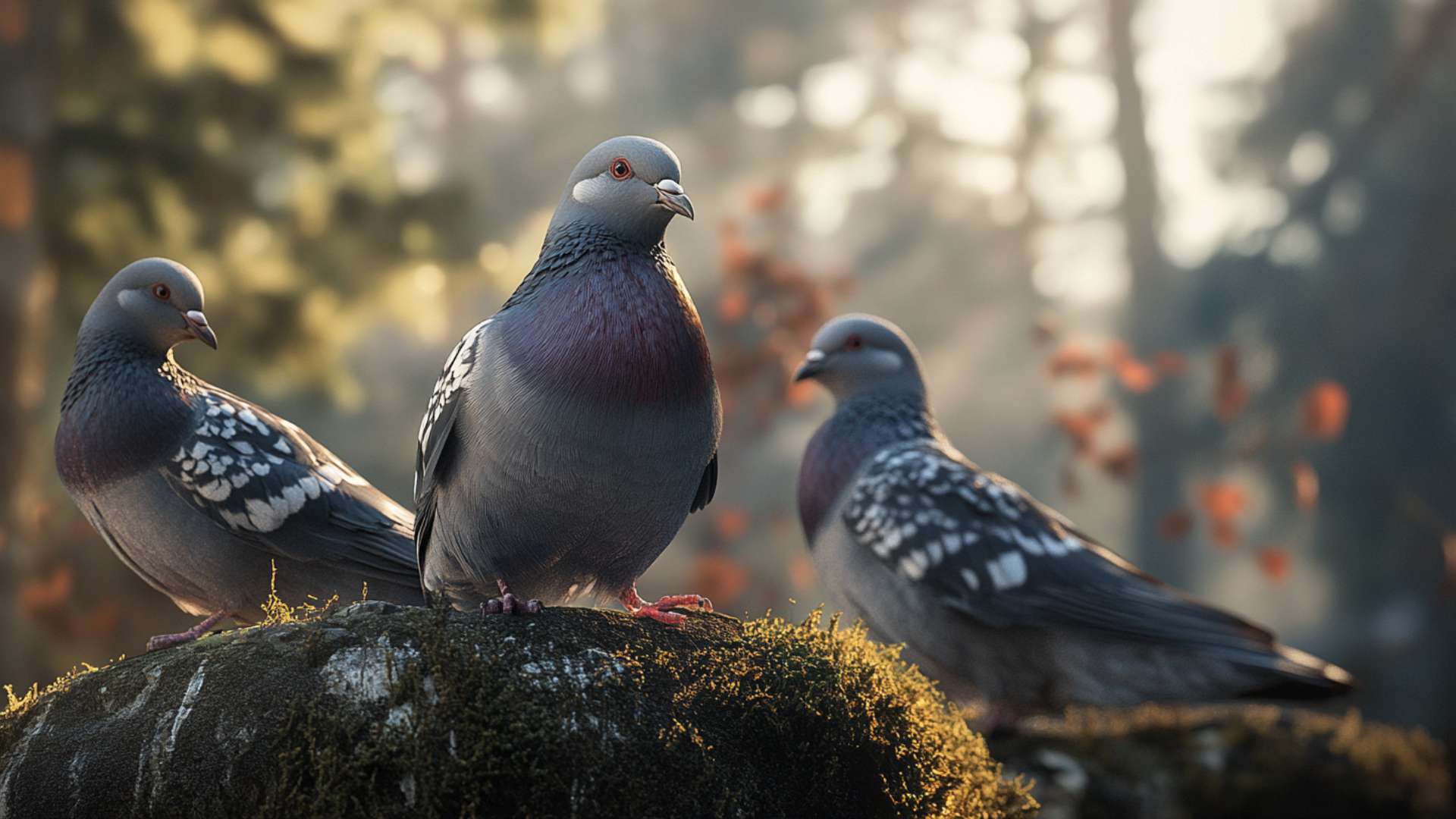
Psychological Factors:
Pigeons have long been associated with humans, especially in urban environments. This connection is primarily rooted in psychological factors. One prominent reason is their predisposition to associate humans with food sources.
Over time, pigeons have learned that humans often provide them with sustenance, whether intentionally or unintentionally through discarded food scraps. As a result, they have developed a strong association between humans and nourishment.
Another psychological factor contributing to pigeon behavior towards humans is their adaptation to urban environments. These birds are highly adaptable and have thrived in cities due to the ample food sources and shelter available.
Urban landscapes provide pigeons with a consistent supply of human-generated food waste, making cities ideal habitats for them. Additionally, pigeons display socialization through positive reinforcement from humans.
When individuals feed or interact kindly with pigeons, these birds learn that approaching people can lead to rewards such as food or attention. This positive reinforcement strengthens the bond between pigeons and humans.
Biological Factors:
Pigeon behavior towards humans can also be attributed to certain biological factors. For instance, pigeons possess remarkable visual acuity enabling them to recognize human faces. They can distinguish individual facial features and remember familiar faces over extended periods of time.
This ability allows them to identify specific individuals who may be more likely to provide them with food or pose less threat. Furthermore, pigeons possess an extraordinary navigation system that relies on the Earth’s magnetic fields.
They use this biological compass during their long-distance flights and when navigating unfamiliar territories in search of resources like water and food. It is believed that this magnetic sensitivity helps guide their movements when interacting with human settlements.
Both psychological and biological factors contribute to pigeon behavior towards humans in urban environments. The associations formed due to their predisposition for food, their adaptability to urban landscapes, and the positive reinforcement received from humans all play a role.
Additionally, their impressive visual acuity and ability to navigate using magnetic fields aid in their interactions with humans. Understanding these scientific explanations helps shed light on the fascinating dynamics between pigeons and humans in our shared urban spaces.
Interactions with Urban Pigeons
Feeding pigeons: benefits, risks, and ethical considerations
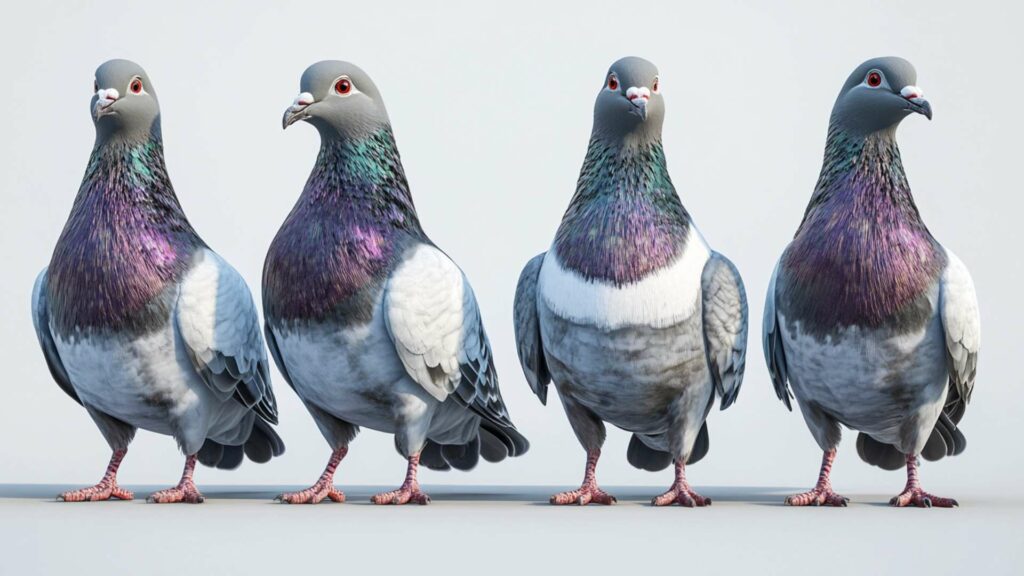
Feeding pigeons is a common activity in many urban areas. For some people, it is an enjoyable way to connect with nature and experience a sense of tranquility amidst the hustle and bustle of city life. There are several benefits to feeding pigeons.
Firstly, it can create a positive bond between humans and these feathered creatures. Secondly, feeding pigeons can provide them with supplementary food during times when natural sources may be scarce.
Additionally, observing their behaviors up close can be an educational experience for children and adults alike. However, it is important to consider the risks and ethical implications associated with feeding pigeons.
Feeding them excessively or relying solely on human-provided food can disrupt the natural balance of their diet and potentially lead to health issues for the birds. Furthermore, pigeon populations can quickly grow out of control when there is an abundant food source available, leading to overcrowding and potential environmental problems.
When deciding whether or not to feed pigeons, it is crucial to respect local regulations regarding wildlife interaction and public health concerns related to bird droppings. If you choose to feed them, make sure to offer appropriate pigeon-friendly food such as seeds or grains instead of unhealthy processed human foods that may harm their digestive system.
Promoting coexistence: tips for peaceful interactions
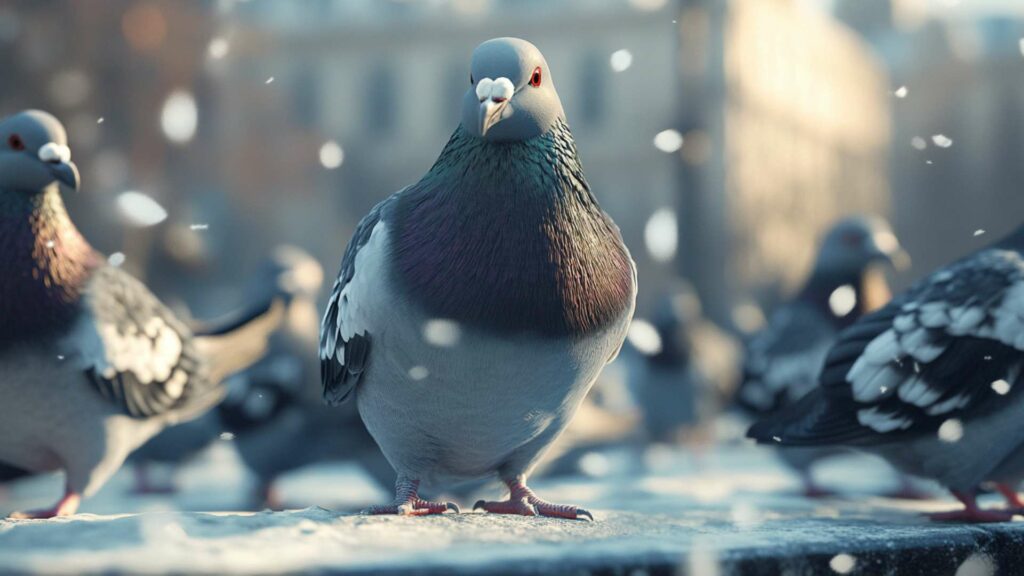
Creating a harmonious coexistence between humans and urban pigeons is possible through understanding their behaviors and adopting certain practices that ensure mutual respect. Firstly, maintaining cleanliness in shared spaces is essential.
Pigeon droppings can be unsightly and potentially pose health risks due to the presence of bacteria or fungi. Regular cleaning of affected areas helps minimize these concerns while also preventing any unpleasant odors.
To discourage pigeons from nesting on balconies or rooftops, using deterrents such as spikes or nets can be effective. These measures do not harm the birds but prevent them from settling in unwanted areas where they may cause damage or inconvenience.
Another way to peacefully coexist with pigeons is by providing alternative roosting spots. Installing purpose-built pigeon houses or perches away from sensitive areas can redirect their attention and minimize potential conflicts.
Education and awareness are vital in promoting coexistence. Informing local communities about the ecological importance of pigeons and their role in urban ecosystems can foster a positive attitude towards these birds.
Encouraging responsible behaviors such as not littering or feeding the birds excessively can also contribute to maintaining a healthy balance. Remember, it is our responsibility as inhabitants of urban environments to find ways for humans and wildlife, including pigeons, to share space peacefully while respecting each other’s needs and boundaries.
Interacting with urban pigeons can be an enriching experience if approached with certain considerations in mind. Feeding pigeons should be done responsibly, understanding the benefits and risks involved.
Promoting coexistence grey pigeons requires adopting practices that prioritize cleanliness, discourage nesting in unwanted areas, provide alternative roosting spots, and raise awareness among communities about the value of these feathered creatures in urban ecosystems. By doing so, we can create a harmonious environment where both humans and pigeons thrive together.
Famous Instances of Pigeon-Human Connections
War pigeons: their role in history
Pigeons have played a significant role in human history, particularly during times of war. These intelligent birds were trained to carry messages across enemy lines when other communication channels were compromised. World War I and II witnessed the remarkable contributions of war pigeons.
For instance, Cher Ami, a brave gray pigeon, saved the lives of many American soldiers in France by successfully delivering a critical message despite being injured and blinded. Pigeons like Cher Ami symbolize courage, loyalty, and determination in the face of adversity.
Conclusion
Pigeons have long been fascinating creatures with both practical and symbolic or spiritual significance, to humans. Whether it be their vital role as messengers during wars or the various interpretations they hold in cultural beliefs, pigeons inspire wonder and curiosity. While seeing a pigeon may simply be an everyday occurrence for most people, it can also carry deeper spiritual meaning or serve as a gentle reminder to embrace peace and harmony within ourselves and our surroundings.
So next time you spot a gray pigeon coming your way or witness two pigeons engaged in their graceful mating dance on your windowsill, take a moment to appreciate these birds’ beauty and the symbolic meanings they hold. Their presence may just be a spiritual blessing reminding you of the interconnectedness between humans and nature or even carrying messages from the spiritual realm.
Let us recognize these feathered messengers as entities that bring comfort, joy, and inspiration into our lives. May we find solace in their graceful flights through the sky as they embody resilience and adaptability.
The humble pigeon carries within itself a rich tapestry of spiritual symbolism woven across ancient times and cultures worldwide. So let us celebrate the humble and often underestimated pigeon, for they remind us that even the most ordinary creatures can hold extraordinary beauty and lessons.
Guard Against Pigeons with D-Termination: Las Vegas’ Leading Pest Control Solution!

If you’re contending with pigeon concerns, D-Termination is your go-to source for help. Our team of experts excels in pigeon deterrence, rejuvenating cleanliness and maintaining the integrity of your surroundings. Bid farewell to pigeons by opting for D-Termination’s effective pest control services today!
Reach out to us at 702-919-6310 or visit dtermination.com to schedule your pigeon control service and regain control of your space from these unwelcome pests.
Frequently Asked Questions:
When a pigeon comes near you, it may simply be seeking food or is accustomed to human presence.
Pigeons can symbolize different things in various cultures, often associated with peace or messenger symbolism.
Pigeons are generally considered neither good nor bad luck; it varies by cultural beliefs.
When a bird visits, some people believe it could be a sign or message, but it’s open to interpretation.

